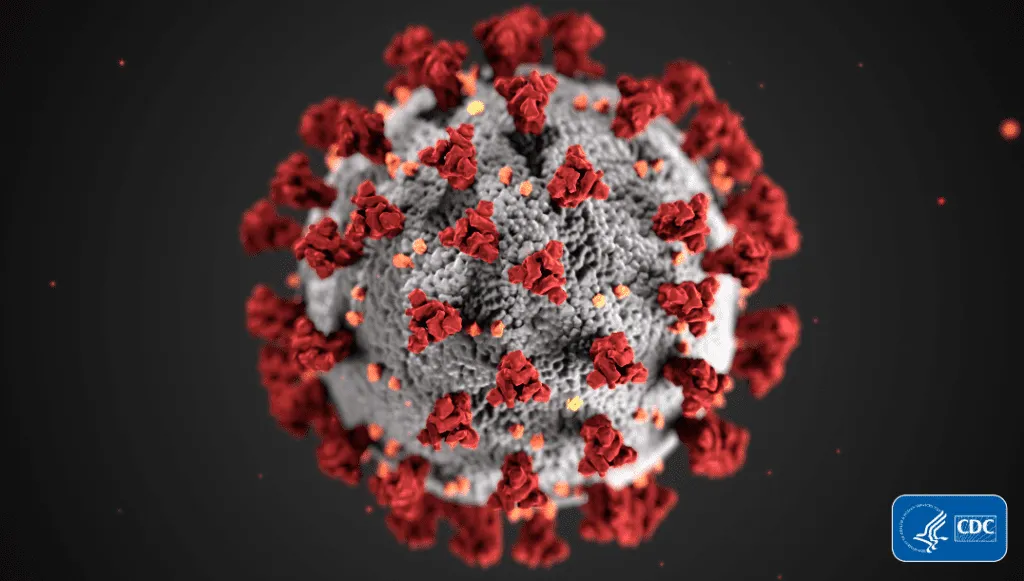Along with the new decade came a new strain of the coronavirus that has sparked fear and worldwide panic. Originating in Wuhan, China, Coronavirus now has confirmed cases in 81 other countries, with 80 confirmed cases in the United States. As of March 4th, 2020, the Centers for Disease Control and Prevention (CDC) reports that 13 states including Arizona, California, Florida, Georgia, Illinois, Massachusetts, New Hampshire, New York, North Carolina, Oregon, Rhode Island, Washington, and Wisconsin have cases of Coronavirus. Currently, 9 people have died due to the virus.
Coronaviruses were initially discovered by scientists around the 1960s. It earned its name from the crown shaped protrusions that cover its surface. There are seven strains of Coronavirus that affect humans, including:

- 229E (alpha coronavirus)
- NL63 (alpha coronavirus)
- OC43 (beta coronavirus)
- HKU1 (beta coronavirus)
- MERS-CoV (beta coronavirus that causes Middle East Respiratory Syndrome MERS)
- SARS-CoV (beta coronavirus that causes severe acute respiratory syndrome SARS)
- SARS-CoV-2 (novel coronavirus that causes coronavirus disease 2019, aka: COVID-19)
Every year, people around the world are affected by coronavirus 229E, NL63, OC43, and HKU1. In fact, these strains have affected almost every person during some point in their lifetime. The 229E, NL63, OC43, and HKU1 strains of coronavirus generally cause symptoms such as runny nose, headache, fever, sore throat, cough, and a general unwell feeling. More serious cases have also been known to develop into pneumonia or bronchitis.
Animals such as cattle, camels, and bats are also susceptible to certain strains, and can even pass these strains to humans. In the past, this has occurred with SARS-CoV and MERS-CoV. It is believed that this may also be the case for COVID-19. Research has suggested that the virus originated from bats, was spread to humans at a live animal market, and then continued to spread from person to person. The virus spreads through community spread, which means it tends to affect people in the same area.

Beyond the fact that COVID-19 affects people in the same area, it is known for sure how the virus spreads. However, other types of common human coronaviruses can be transmitted by air that has been infected with coughing or sneezing, close personal contact or touching, and touching an infected surface and then touching your eyes, nose, or mouth.
Based on this, scientists believe the virus is spread through close contact and through respiratory droplets that contain the virus. They also believe that the virus is the most contagious when a person is actively experiencing symptoms, although it is possible to spread the virus without symptoms. The virus may also spread from touching infected surfaces and then your mouth, nose, or eyes.
The CDC has noted that there is a high potential threat for both the United States and other countries. Currently, however, the virus is not considered to be rapidly spreading through the United States and the majority of the population will not be immediately exposed. Nevertheless, the virus will likely reach the level of global pandemic and the risk to the United States may change at any time.
As a precaution, the CDC recommends taking the following steps:
- get a flu shot
- cover your cough or sneeze
- wash your hands often, especially before facial contact
- stay home when you are sick
- avoid close contact with others
- clean surfaces
To stay up to date on the latest news regarding COVID-19, visit the Centers for Disease Control and Prevention website. They post regular updates about cases of COVID-19 in the United States Monday through Friday.

Dr Kumar is a highly skilled physician dedicated to providing gentle and effective care to patients of all ages and medical conditions. He achieved his degree in a field that he is passionate about. He believes that excellent health begins with education and has made his mission to enlighten patients to ways they can take greater control over their health. Dr Kumar is committed to continuing education activities and remaining aware of the latest advancements in Medical Science to maintain current high standards of care.




